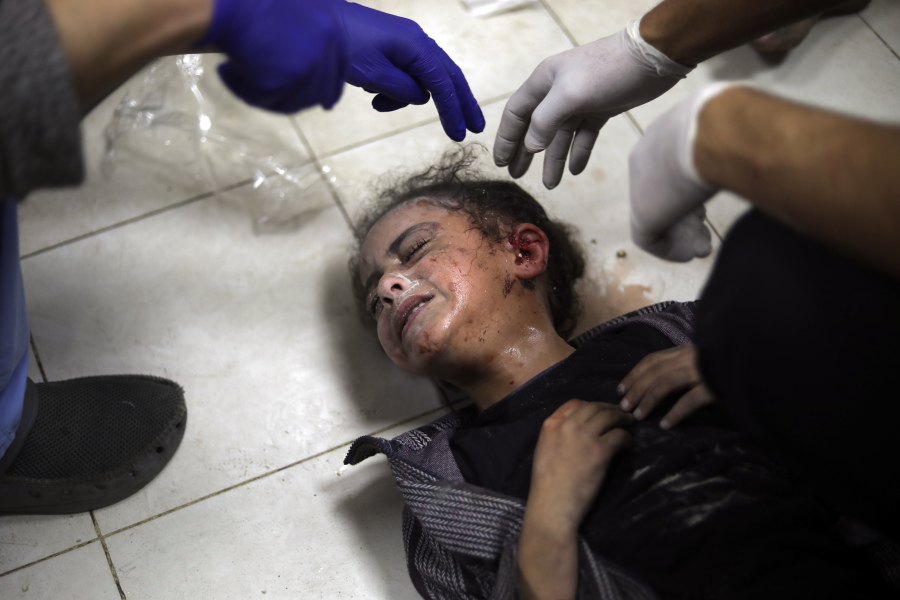UNITED NATIONS (AP) — Palestinians are dying every day in Gaza’s overwhelmed remaining hospitals which can’t deal with the tens of thousands people hurt in Israeli’s military offensive, a U.N. health emergency expert said Wednesday, while a doctor with the International Rescue Committee called the situation in Gaza’s hospitals the most extreme she had ever seen.
The two health professionals, who recently left Gaza after weeks working in hospitals there, described overwhelmed doctors trying to save the lives of thousands of wounded people amid collapsing hospitals that have turned into impromptu refugee camps.
The World Health Organization’s Sean Casey, who left Gaza recently after five weeks of trying to get more staff and supplies to the territory’s 16 partially functioning hospitals, told a U.N. news conference that he saw “a really horrifying situation in the hospitals” as the health system collapsed day by day.
Al-Shifa Hospital, once Gaza’s leading hospital with 700 beds, has been reduced to treating only emergency trauma victims, and is filled with thousands of people who have fled their homes and are now living in operating rooms, corridors and stairs, he said.



